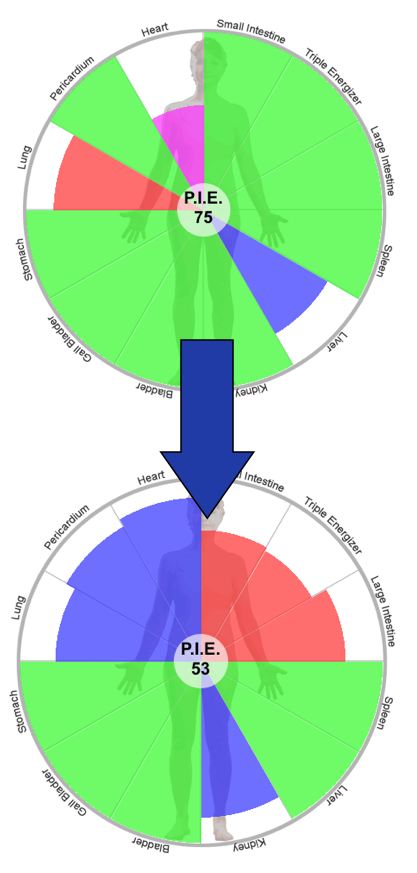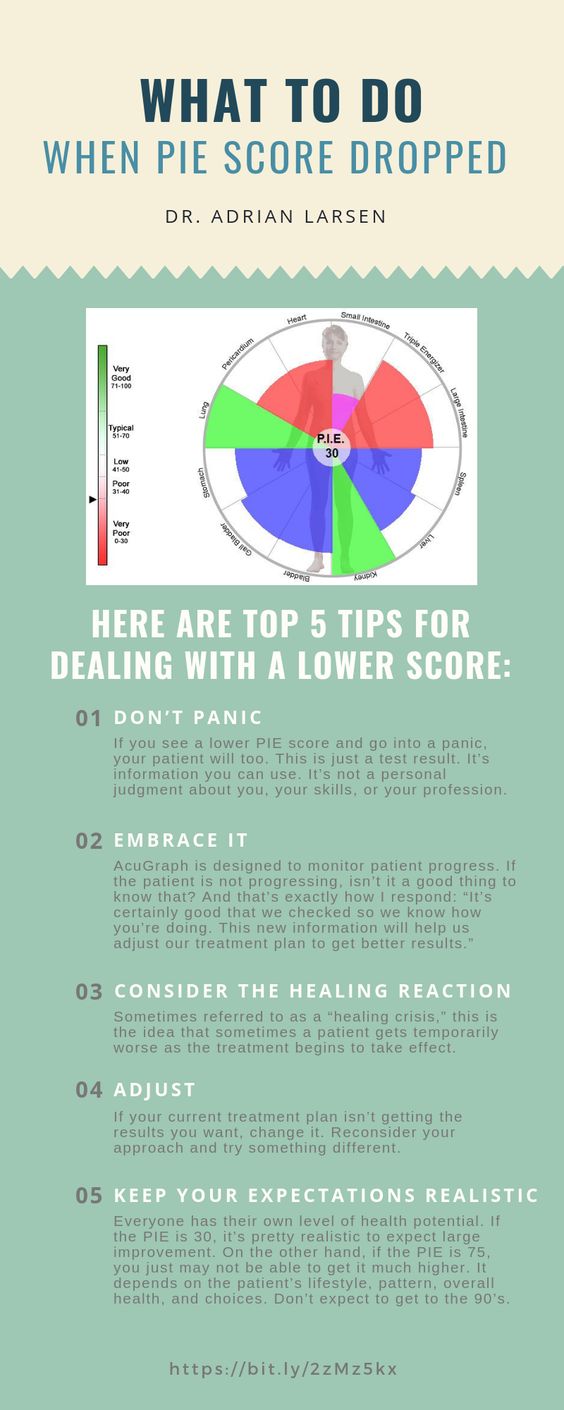Ever since we first introduced our patented P.I.E. score technology in AcuGraph 3, thousands of practitioners and patients have come to rely on its single-number representation of meridian balance. The PIE score (Personal Integrated Energetics) makes for an efficient explanation, saves time, and answers the age-old question, “Am I getting better?”
 Statistically speaking, the PIE score is a good representation of overall balance. One of the most pleasing byproducts of our landmark 2011 study of over 8,500 patients was the finding that PIE score does indeed improve with treatment. (See more about the study at http://www.ncbi.nlm.nih.gov/pubmed/21440876, and read about the award it won here.)
Statistically speaking, the PIE score is a good representation of overall balance. One of the most pleasing byproducts of our landmark 2011 study of over 8,500 patients was the finding that PIE score does indeed improve with treatment. (See more about the study at http://www.ncbi.nlm.nih.gov/pubmed/21440876, and read about the award it won here.)
So what do you do when you and your patient are expecting to see an improved PIE score, but it drops instead? I’m glad you asked!
Since the PIE score is designed to monitor meridian balance in real time, and since the meridians constantly adapt to everything going on in and around us, it shouldn’t surprise us when PIE scores fluctuate. It’s perfectly normal to see movement in the score from day to day. But on the other hand, there are those times when you start out with a patient who clearly needs help, and you provide it in the form of a well-thought-out and expertly applied treatment. Expecting to see marked improvement, you measure the patient at the next visit, only to find the score has actually gone down, rather than up.
 Now what?
Now what?
Should you:
a) concede defeat and send the patient to someone else?
b) give up on graphing and try something else?
c) stammer around in an embarrassed manner until you eventually offer a free treatment?
No, friends, the correct answer is D: NONE OF THE ABOVE!
Here are my top tips for dealing with a lower score:

- Don’t panic: If you see a lower PIE score and go into a panic, your patient will too. This is just a test result. It’s information you can use. It’s not a personal judgment about you, your skills, or your profession. Treat it as you would any other lab test result. It’s information to use.
- Embrace it: AcuGraph is designed to monitor patient progress. If the patient is not progressing, isn’t it a good thing to know that? And that’s exactly how I respond: “It’s certainly good that we checked so we know how you’re doing. This new information will help us adjust our treatment plan to get better results.” Translation, whatever we tried isn’t working, so we’ll adjust and keep trying. The PIE score is a good thing! Just makes sense, doesn’t it?
- Consider the healing reaction: Sometimes referred to as a “healing crisis,” this is the idea that sometimes a patient gets temporarily worse as the treatment begins to take effect. Though this reaction is somewhat rare in meridian graphing, it’s still something to consider.
- Adjust: If your current treatment plan isn’t getting the results you want, change it. Reconsider your approach and try something different. Remember, using the points AcuGraph recommends is the most effective way to improve the meridian balance. You can use other points as well, but if you ignore the AcuGraph recommendations, don’t expect to see great PIE results.
- Keep your expectations realistic: Everyone has their own level of health potential. If the PIE is 30, it’s pretty realistic to expect large improvement. On the other hand, if the PIE is 75, you just may not be able to get it much higher. It depends on the patient’s lifestyle, pattern, overall health, and choices. Don’t expect to get to the 90’s.
OK, so there you have it.
How to use PIE for the best outcome, regardless of the direction it’s headed. I hope you find this information useful–don’t forget to leave me a comment and tell me about your PIE results.
 Of course…now that I think about it…there are other ways to enjoy PIE. This blog has made me hungry!
Of course…now that I think about it…there are other ways to enjoy PIE. This blog has made me hungry!
Have a great weekend everybody!
PS. Have you tried Laser Acupuncture yet? It is AMAZING! Watch your InBox for more information next week and be sure to “Like” our Facebook page, that’s where we post new information FIRST!
